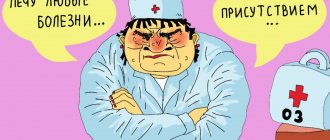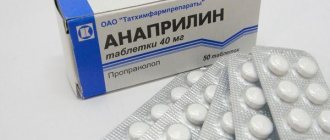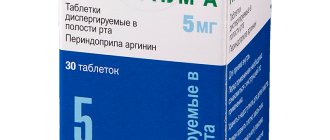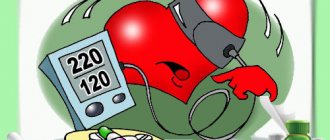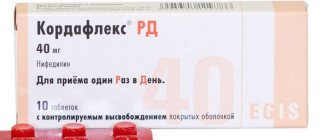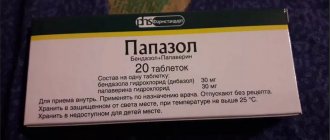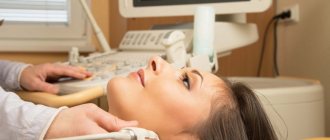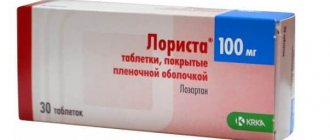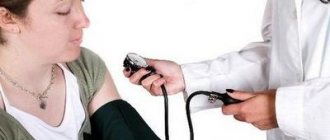Stroke is a serious disease that affects people of all ages. It occupies a leading position among all cardiovascular pathologies. Its development is directly related to blood pressure levels, and not always high. Decreased vascular tone and impaired cerebral circulation cause irreparable changes. The risk increases if you do not take care of your health, especially in adulthood.
Stroke is a serious disease that affects people of all ages.
Pathogenesis of the disease
There are 2 types of stroke:
- Ischemic - the blood vessels in the brain narrow or become blocked. There is a complete cessation of blood flow into the tissues. Since there is no oxygen and other substances necessary for life, cell death occurs. According to the mechanism of development, this is the same as a heart attack. In women it occurs against the background of rheumatism of the heart in combination with cardiogenic embolism, and in men due to atherosclerosis or hypertension.
- Hemorrhagic - arteries rupture, causing hemorrhage in the brain and its membranes. This process can occur at the site of protrusion of the vascular wall, which is formed under the influence of prolonged influence of hypertension and other negative factors. Under high pressure, the blood pushes the tissues apart and fills the area. The resulting clot compresses the cells, which leads to their death. According to statistics, pregnant women are at risk, since the tendency to develop the disease during this period increases 8 times.
There are several types of apoplexy:
- Microstroke - brain tissue dies due to a blood clot or a sharp narrowing of the lumen of small vessels. The attack lasts for 5 minutes. Violations are hardly noticeable and are quickly restored. The insidiousness of the disease lies in its asymptomatic manifestation, which will lead to serious consequences in the future.
Important! Even when the symptoms have disappeared and the patient’s condition has improved, it is still necessary to consult a doctor as soon as possible. Since the blood channels are partially blocked or narrowed, this indicates a risk of developing a cerebral infarction.
- Extensive - large areas of the brain are affected, subsequently paralysis of half the body occurs, and many body functions are disrupted. In severe cases, the person falls into a coma.
- Spinal - acute pathological changes in the blood circulation of the spinal cord. Depending on the specific affected areas, sensory and motor disorders of varying severity occur, and sometimes the functions of the pelvic organs are disrupted.
- Repeated is a recurrence of an apoplexy that a person suffered in an acute form. If the doctor's recommendations are not followed sufficiently, a second attack can very easily occur, and its consequences are difficult to cure.
Important! Any disturbance of cerebral circulation requires urgent medical intervention. Pathological changes tend to develop rapidly, so at the first symptoms the patient needs emergency care.
Who is at risk?
At what pressure does a stroke occur? This is the main question when determining whether a person is at risk or not. After all, elevated blood pressure is a fundamental sign of a stroke.
However, pressure increases under certain conditions:
- obesity;
- diseases of the heart and blood vessels;
- persistently high blood pressure;
- diabetes;
- increased blood clotting;
- some diseases, for example, atherosclerosis, anatomical changes in the arteries, both congenital and acquired;
- increased amount of cholesterol.
Naturally, an incorrect lifestyle is the strongest provocateur of the onset of an “attack”, and this is alcohol abuse and smoking, constant stress and excess weight. A number of doctors and researchers believe that even sleep apnea, that is, periodic cessation of breathing, can trigger a stroke.
Provoking factors
Causes of pathology:
- Hypertonic disease.
- High coagulation.
- Changes in heart rate.
- Diseases of the endocrine system.
- Atherosclerosis.
- Increased body weight.
- Bad habits.
- Traumatic brain injuries.
- Physical inactivity.
Pathology associated with hypertension
If blood flow to the brain is disrupted, not only the level of tension, but also changes should be taken into account. This disease develops according to the following patterns:
- To treat hypertension, the patient is prescribed drugs that normalize blood pressure. While the pills are in effect, the condition is stable, but if the medications are not taken in a timely manner, a sharp jump occurs, which can provoke a cerebral infarction.
- Hypertension is characterized by constantly high blood pressure in the range of 160-200 mmHg. Art. The human body adapts to such disturbances and does not cause discomfort. Therefore, the patient often does not control the values. In this situation, against the background of hypertension, an attack can occur at any time.
- With heavy physical activity, constant stress, chronic fatigue, a sudden jump in blood pressure levels is possible, which stimulates vascular rupture.
It is quite possible to avoid a stroke with high blood pressure; you just need to undergo an examination so that the doctor prescribes an individual course of therapy. And with the help of folk remedies and preventive measures, the positive effect will increase, and the patient’s condition will stabilize.
Combating post-stroke hypotension
Often the period after a stroke is accompanied by low values, which are also dangerous. But therapy that increases blood pressure is rarely practiced. When the marks on the tonometer drop to critical numbers, the patient should take Dopamine, Gutron or Dopmin.
Along with taking medications, a special diet and exercise are required. The patient should not make sudden movements or take hot baths. To prevent a lack of oxygen, it is recommended to take frequent walks and not get overtired.
To normalize nutrition, you need to exclude sugar, caffeine, carbohydrates, and fats from the menu.
For reference. The drinking regime is especially important for hypotensive patients after a stroke: you need to drink more than 1.5 liters of water daily.
Cerebral apoplexy with low blood pressure
In hypotensive patients, indicators fluctuate at 90 to 60 mmHg. Art. This condition is normal for them and does not cause concern. But when exposed to certain factors, hemorrhage is provoked, namely:
- Short-term jump to 180-100 mmHg. Art. while taking medications with side effects such as increased blood tone.
- Hard physical labor, heat, stress stimulate overstrain of the walls of blood vessels, which leads to their rupture.
With hypotension, the described reasons increase arterial values and greatly worsen the patient’s well-being. But do not forget that over the years the blood channels wear out, become overgrown with deposits and lose elasticity. Therefore, it is impossible to sharply reduce blood pressure, since atherosclerotic plaques can come off and clog the lumen of the arteries, and this will lead to tissue necrosis.
Can you have a stroke with normal blood pressure?
Acute cerebrovascular accident occurs with standard generally accepted indicators of arterial tension. It all depends on the condition of the cerebral vessels, the cervical spine, hormonal levels, stress resistance of the central nervous system, the functioning of the adrenal glands and many other factors.
If a person’s individual blood pressure value is 100 per 70 mm Hg. Art., and when exposed to certain causes it rises sharply to 130-140 mm Hg. Art. is a hypertensive crisis, the complication of which is a stroke.
Important! The difference between the upper and lower numbers must be at least 40 units, otherwise this indicates the risk of apoplexy.
When to reduce
It is impossible to lower blood pressure after a stroke artificially, with the help of medications. Since this significantly reduces the body’s protective and regenerative abilities. Because of this, blood flow through the vessels to the affected cells is reduced, and this directly affects the recovery of the brain after a stroke. If you are at risk of having a stroke, you should definitely call a doctor and follow the doctor’s further instructions. Self-medication is strictly prohibited!
Main signs of pathology development
Symptoms indicating a deterioration in a person’s condition:
- Severe weakness, absent-mindedness.
- Headache.
- Dizziness.
- Tinnitus.
- Bleeding from the nose.
- Facial asymmetry.
- Unilateral limb paralysis.
- Confusion of speech.
- Blurred consciousness.
- Involuntary urination.
- Body temperature rises.
If even the slightest signs are observed, it is necessary to urgently measure vascular tension. There are situations when there is no tonometer at hand; in such cases, blood pressure can be determined by the pulse: high - tense (more than 90 beats per minute), low - relaxed (less than 60 beats). You should immediately consult a doctor, since surges in blood pressure are the main signal that prevents the occurrence of cerebral blood flow disorders.
Symptoms
At what pressure does a stroke occur? In fact, this is not the main question, because a stroke never appears suddenly. Before an “attack”, any patient experiences a number of symptoms that are harbingers of its onset.
What to pay attention to:
- If you have headaches that bother you on a regular basis.
- Dizziness.
- Periodic sensation of tinnitus.
- Decreased performance and memory.
- Rare manifestations of difficulty speaking and even memory loss.
- Numbness in any part of the body, even short-term.
- Temporary blindness.
- Any pain, even mild, in the area of the heart muscle and sternum.
- Unsteady gait, which occurs periodically.
Snoring, especially with periodic cessation of breathing, is also an important “bell”. The morning state requires special attention; even if a person has slept for 12 hours, but feels tired and “broken,” then you should think about this, even if the person does not snore.
The presence of at least one of the symptoms should be a reason to see a doctor and undergo a full examination of the body.
The first hours of a stroke
When a person develops circulatory pathology, it is very important to control the dynamics of pressure: does it increase or decrease. High blood pressure value, not more than 180 mm Hg. Art. - a good indicator that does not need to be knocked down. Cells remain near the lesion, which with timely treatment can restore their functions. In this way, the body protects and preserves brain activity. If the level of blood tension remains stable for 12 hours, then this is a favorable sign for the rehabilitation period.
But sometimes the tonometer readings drop below 160 mmHg. Art., which indicates tissue necrosis and irreversible consequences. This condition is dangerous for the patient. The body is not able to repair damage already received. The most common outcome is death.
Important! It is strictly forbidden to give antihypertensive drugs during a crisis, since it is unknown when the victim last took pills. An overdose will only accelerate cell death.
Microstroke
In scientific medicine there is no concept of “ministroke”. However, this does not mean that the patient's condition cannot worsen. But the difference between a micro-stroke and a stroke is that in the first case everything happens very quickly and you don’t even need to know what the pressure is during a stroke.
With a micro-stroke, a person immediately becomes powerless, shows weakness in speech and movements, and the left side is lost. But all symptoms disappear very quickly, within 24 hours. This is the longest period, usually everything happens within 5-12 hours, after which the patient returns to normal.
When treating this disease, the same methods and research methods are used that are applicable for an ordinary stroke. The worst thing is that a micro-stroke has the same serious consequences as a stroke.
